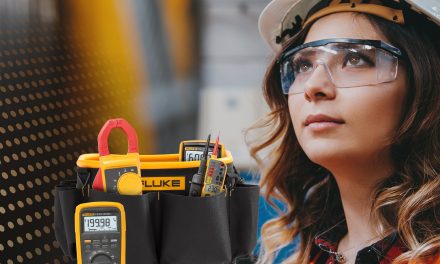 Cutting corners with sensor hygiene could be draining process equipment budgets, warns Phil Dyas, industrial sensors UK product manager at SICK
Cutting corners with sensor hygiene could be draining process equipment budgets, warns Phil Dyas, industrial sensors UK product manager at SICK
A chain is only a strong as its weakest link. In food & pharmaceutical manufacturing environments, hygiene is only as rigorous as any residue of contamination left on even the smallest piece of equipment – like sensors or their mountings and fixings.
But, all too often, lower-grade sensors are incorrectly specified for stringent Clean-in-Place and Sterilise- in-Place regimes that use hot, high pressure washes with aggressive detergent and sterilising solutions.
 More careful specification of sensors purpose-designed for harsh wash-down and hygienic environments could not only eliminate the danger of leaving pockets of contamination, but also save thousands of pounds in frequent replacement of sensors that are not built to withstand the conditions.
More careful specification of sensors purpose-designed for harsh wash-down and hygienic environments could not only eliminate the danger of leaving pockets of contamination, but also save thousands of pounds in frequent replacement of sensors that are not built to withstand the conditions.
Some specifiers wrongly assume that stainless steel and plastic construction will satisfy hygiene requirements because it is easy to clean the surface. As a result, many optical sensors used in essential tasks such as product and pack positioning on conveyor belts, proximity sensing or triggering pick-and-place are wrongly specified. If the right sensor is specified, then a fixing or mounting is chosen that is not to the same standard.
Let’s be clear: It’s not that a sensor may be poorly designed; just wrongly specified for the environment in question. There are many engineers who just expect a sensor to fail in months or even weeks. Because they may have a low capital replacement cost compared to the rest of the hygienic plant, they are treated almost as consumables which get submerged in the high running cost of hygienic plant. In fact, they could be costing a factory £1000s a year.
Lower grade sensors may not be capable of withstanding frequent washing with harsh solutions containing chlorine or hydrogen peroxide. These solutions may also degrade under specified seal materials, particularly where joint design allows solutions to collect and concentrate. If seals or plastic mountings become degraded and cannot be effectively cleaned, at some point the internals will be affected.
Wide fluctuations in temperature from hot flushing to refrigeration may cause considerable stress to materials and seals and internal electronics. Also, water ingress can be caused through a ‘pump’ action initiated by rapid temperature swings.
Here’s what you need to know
So, what should specifiers in high-hygiene environments look out for?
Firstly, of course, that the designs are in accordance with the latest international standards such as US FDA and the EU’s EHEDG and meet standards such as IN ISO 14159:2005-07 on general hygiene principles for machinery design, and EN 1672-2:2005+A1 which focuses on foodstuffs.
If casings are not seam-free, all joints should be designed so they are capable of being sealed with edges that are flush. Corners should rounded, ridges rounded and joint seals made of appropriate materials that resist contamination, like silicon rubber. Wherever possible, LED indicators and switches must be completely flush.
Importantly, sensor mounting and fixings, cable entries and other parts must also be designed with these standards in mind. There’s not much point having the front face apparently hygienic, when the mounting acts as a dirt trap and protects contamination build-up from being washed off.
The relevant environmental protection standard is IP69K which signifies that a piece of equipment can withstand high pressure, close-quarter, hot (80°C) sprays for a series of test of 30 seconds duration. However, cumulative effects of chemicals and expansion/contraction could compromise the materials and construction. This means that IP69K should be regarded as a starting point for the specification, not an end in itself.
For this reason, it is also important for specifiers to appreciate the difference between sensors constructed to be resistant to washdown and sensors designed for 100% hygienic environments.
SICK’s solutions are focused on two ranges, depending on the level of hygienic protection required:? Inox and Hygienic.
The essential difference in features between the wash-down and hygienic versions is that a hygienically-designed sensor is built for use on the process side where the sensor will come into contact with media or in the direct vicinity of food. It conforms to common standards and design guidelines for hygienically-designed products and is constructed. Sensors such as the W4S-3H photoelectric sensor family offer best-in-class detection performance in both Inox and Hygienic versions.
SICK also offers compatible stainless steel mountings, reflectors, tubes and flanges all made to the same stringent standards without compromising on performance or ease-of-use.
SICK’s product development teams work with standards authorities and manufacturers to ensure products not only comply, but exceed, requirements, to offer value in long term plant operation, not just the best price.
SICK UK
T: 01727 831121


